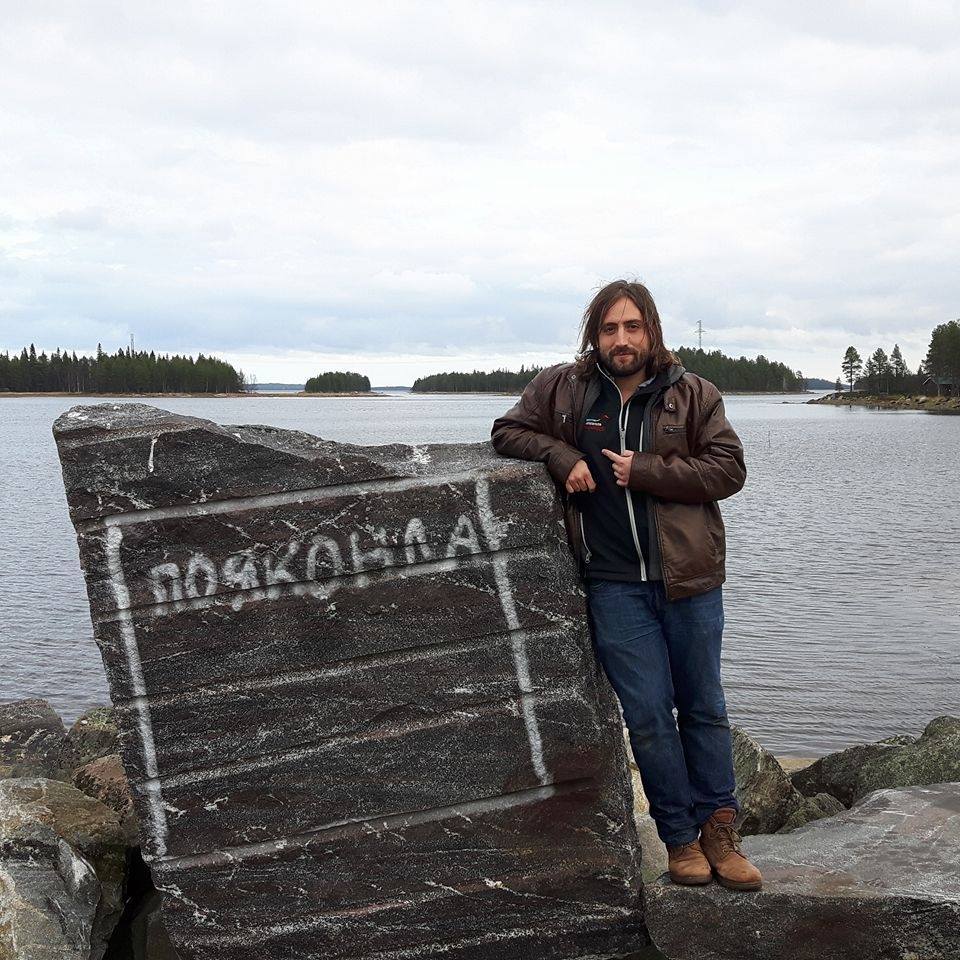Alejandro Martínez García
Permanent Researcher

Contact: This email address is being protected from spambots. You need JavaScript enabled to view it.
+39 0323 518363 (Telephone)
+39 0323 556513 (Fax)
+39 0323 518363 (Telephone)
+39 0323 556513 (Fax)
Broad research specialisms: Evolution, Ecology, Biogeography, Zoology, Systematics. Aquatic subterranean ecosystems (anchialine caves, submarine caves, groundwater aquifers). Interstitial fauna. Phylogenetics, comparative methods, statistics, networks.
Research Interests:
Marie Curie ANCAVE project.
At the moment, I am working on aquatic subterranean environments, mainly anchialine systems, as models to investigate evolutionary processes affecting animal lineages. Anchialine systems are known throughout the world and consist of land-locked bodies of marine origin and partially isolated from the ocean. This isolation increases with distance from the sea and can be characterized as a gradient in the main ecological parameters (i.e. light, salinity, oxygen, water residence time). Anchialine systems consist of many caves, linked by a common geological history but displaying different ecological parameters due to their different distances from the ocean. Therefore, anchialine systems represent groups of discrete, numerous, geographically spread and varied entities that facilitate independent colonization events by marine biota, providing many independent replicates of comparable evolutionary processes.
My project has to main objectives:
Objective I is to identify common patterns across guilds or taxonomic groups of animals, the percentage of endemism and/or disharmony, as well as the degree of dependence on extrinsic (geological and ecological) and intrinsic (phylogenetic) factors, by applying macroecological and phylogenetic methods to large datasets. Dataset consists of a database comprising all published records on animals ocurring in water in the underworld. Some of this information is already at the World Register of Marine Species.
Objective II is to test several hypotheses to unmask these processes, such as area-related speciation/extinction, the appearance of key morphological innovations or niche conservationism versus niche evolution, by implementing phylogenetic comparative methods, and molecular clock analyses.
This project has received funding from the European Union’s Horizon 2020 research and innovation programme under the Marie Skłodowska-Curie grant agreement No 74553
Diversity, systematics and, evolution of microcoscopic, weird-looking animals.
Partially in connection with my Marie Curie project, I am working on the systematics and evolution of several lineages of cave-dwelling and interstitial animals. This includes the previously known Archiannelida (several projects in collaboration with Assoc. Prof. Katrine Worsaae and Assoc. Prof. Maikon di Domenico), Kinorhyncha (together with Nuria Sánchez), Tanaidacea (with Alvaro García-Herrero), 'Danielopolina' ostracods (with Bill Humphreys), parasitic copepods (collaboration on a project by Slava Ivanenko and Diego Fontaneto) and general diversity of meiofauna in Santa Marta, Colombia (Grupo Miku, Universidad del Magdalena, Prof. Sigmer Quiroga). On these groups, we are working at different levels, ranging from species descriptions and morphological studies, combining different microscopical techniques (light, scanning and transmission electron, as well as confocal laser scanning microscopy) to phylogenetic, biogeographical and comparative analyses.
Conservation of the endangered species Munidopsis polymorpha and Morlockia ondinae in Lanzarote
The galatheid crab Munidopsis polymorpha and the remipede Morlockia ondinae have been declared as endangered by both Spanish and Canarian local laws. We are completing several projects in Lanzarote at the moment, hoping to better understand the current situation of these animals in order to propose more effective conservation measures. These projects involved the analyses of gut microbiomes and contents of several cave species using high-throughput sequencing technologies; performing network analyses on the communities at Los Jameos del Agua lake, as well as understanding the effect of the coins thrown in the lake by the tourists on the microscopic communities of eukaryotes and bacteria living there. More in this video. We are doing several of this research together with the team of allgenetics.
Education:
09/2004- 06/ 2009. Licenciatura in Biology (EquivalentMsC degree). University of La Laguna, Spain. Awarded as Best student in Zoology of the year.
01/2010-09/2013. PhD, Marine Biological Section, University of Copenhagen. (3.5 years). Project: “Evolution and adaptation of marine annelids in interstitial and cave habitats”: Assoc. Prof. Katrine Worsaae.
Research experience:
11/2004-06/2009. Department of Zoology, University of La Laguna (Spain). Undergraduate researcher under the supervision of Assoc. Prof. Jorge Núñez Fraga.
02/2007- 07/2007. Department of Biology, University of the Azores (Portugal). Internship under the supervision of Assoc. Prof. Ana Cristina Costa.
08/2008- 11/2008 Marine Biology Station, University of Copenhagen (Denmark). Internship under the supervision of Assoc. Prof. Katrine Worsaae.
02/2012-04/2012. PMuseum of Comparative Anatomy, Harvard University, USA. Internship as PhD student under the supervision of Prof. Gonzalo Giribet.
01/2014-01/2016. Postdoctoral researcher, Marine Biological Section, University of Copenhagen. Project: “Meta-analysis on the origin of marine cave fauna- Insights on global ecological and evolutionary processes”. Carlsberg Foundation Grant, at the group of Assoc. Prof. Katrine Worsaae.
05/2016-010/2017. Postdoctoral researcher in the CNR-RFBR Italian-Russian bilateral agreement grant (RFBR grant 15-54-78061) to Diego Fontaneto and Viatcheslav Ivanenko on symbiosis, within the ISE-CNR, Verbania.
11/2017- now. Marie Sklodowska-Curie Individual Fellowship (IF-EF), H2020 Program of the EU, number 745530 – “ANCAVE-Anchialine caves to understand evolutionary processes”
Extramural Activities:
When I am not working on the projects above, I use most of my time trying to prove the existence of fun combining both analytical and heuristic methods.
